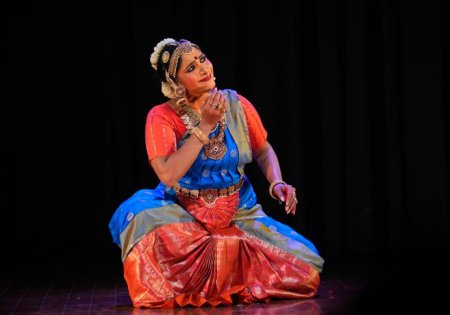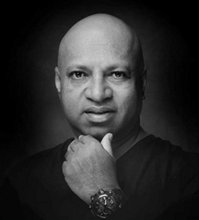
|   |

|   |
Anubhavam: A mesmerizing journey through dance and devotion - Srivatsa Shandilya e-mail: vatsaphoto@gmail.com August 15, 2024 The recent presentation of Anubhavam by Guru Gayathri Chandrashekar, was a captivating performance of Bharatanatyam that seamlessly blended tradition with innovation. Organized and performed by the esteemed artiste herself, the event was a vivid portrayal of her life's experiences, woven through the intricate tapestry of classical dance. Gayathri's performance began with a refreshing departure from the traditional Bharatanatyam margam. Instead of the customary Pushpanjali, she opened with an Abhang, a devotional piece typically sung in praise of Lord Vitthala of Pandharpur. This time, however, it was an ode to Lord Ganesha, set to the foot-tapping rhythm of "Vaaje mrudanga taal veena." The choreography, featuring a Lord Ganesha idol procession, was a visual delight that transported the audience into a realm of bhakti and divine presence. The highlight was the Varnam, "Nee inda maayam seidal," composed by Papanasam Sivan in Dhanyasi ragam and adi talam. This piece saw the Nayika pleading with Krishna, reflecting on the joyous times spent together and the sorrow of his absence. Gayathri's mastery of abhinaya , nritta, and nritya was on full display, as she brought out the deep emotional nuances of the Nayika's longing. Her portrayal of the nine emotions, Navarasa, was exquisite, leaving the audience deeply moved.  Another standout performance was the recital of "Chinnanchiru kiliye, Kannamma," a poem by the celebrated Tamil poet Subramanya Bharathi. This piece, which explored the theme of motherhood, was performed with such depth and emotion that it resonated deeply with everyone present. Gayathri's portrayal of a mother reminiscing about her daughter's childhood, leading up to the poignant moment of sending her off after marriage, was both tender and heart-wrenching. Her abhinaya, combined with precise movements, beautifully captured the essence of this deeply emotional narrative. The program continued with a lively depiction of Purandaradasa's "Intha hennanu naan yello kaaneno?" where Gayathri brought to life the story of Mohini, the only female avatar of Lord Vishnu. The crowd was thoroughly engaged, clapping and laughing along with the playful dance sequence, as Mohini outwits the demon Bhasmasura in a charming and humorous display of dance. In the penultimate piece, a Padam in Madhuvanti raga, Gayathri explored the theme of shringara bhava, or romantic love, through the song "Kanda naal mudalai, kaadhal perugudadi," composed by N.C. Chidambaram. Her nuanced expressions and fluid movements beautifully conveyed the depth of love and longing, further showcasing her exceptional talent in abhinaya. The Thillana, composed by Veena Seshanna in Behag raga, was a vibrant and dynamic piece, marked by fast-paced footwork and intricate rhythms. It was a fitting conclusion to the margam, encapsulating the joyous spirit reflecting in the program's title, Anubhavam. The final piece, a Kavadi Chindu in praise of Lord Krishna, brought the day to a divine close. The song "Ninranda mayil ondru taalangal poda," a composition by Oothukkadu Venkata Subbaiyar, described the enchanting effect of Krishna’s music on the birds, animals, and Gopis of Vrindavana. The stellar music ensemble accompanying the performance added depth to the presentation. Dr. Priya Karthikeyan on the nattuvangam provided a steady rhythm, complementing Gayathri's dance with finesse. The vocal support from Bharathi Venugopal was melodious and evocative, while Harsha Samaga on the mridangam, Venugopal on the flute, Madhusudhan on the violin, and Sumadhur Anoor on the rhythm pad enhanced the overall experience, creating an immersive atmosphere that enveloped the audience. Gayathri Chandrashekar's Anubhavam was not just a dance recital; it was a rich and immersive experience, filled with the emotions and expressions that define the art of Bharatanatyam. The performance was a testament to the enduring legacy of the late Guru K.J. Sarasa, showcasing the strength of the guru-shishya tradition and the continued vitality of this classical art form in the hands of a true master.  Srivatsa Shandilya is a photojournalist and director of International Arts & Cultural Foundation, Bengaluru. |